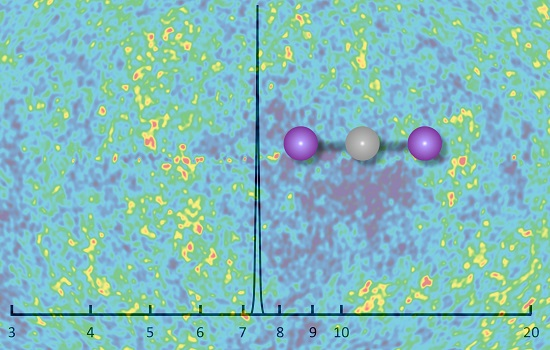Microscopic processes: astrophysics, plasmas
 The projects of this OR are declined according to two topics which are astrophysics and plasmas.
plasmas.
The projects of this OR are declined according to two topics which are astrophysics and plasmas.
plasmas.
Astrophysics:
The project has mainly two parts. The first part will focus on the study of the scattering
inelastic scattering with calculation (by a quantum time independent method) of energy exchanges
between a target (a polar molecule) and a projectile (an atom or a simple molecule). Following the
successes of the last few years, this theme will be marked by a strong increase in the power of
ro-vibrational exchanges and a progressive disappearance of pure rotational exchanges. The ro-
vibrational exchanges of water/C 2 H 2 /CH 4 ↔ hydrogen or nitrogen molecules will be studied using the full power of the Jean-Zay
power of the IDRIS Jean-Zay computer (converged nodes, CPU, GPU). The data produced by
these calculations will be compared with the experiment, in particular the infrared and/or Raman spectroscopy
with application to exoplanets. This project is the object of a close collaboration with the LSMA (Tunis),
and is part of an IRP 2021 application (not selected).
Plasmas
The projects will be led by D. Benredjem and I. Schneider in two parts. The first
concerns the precise calculation of the rates that determine the properties of laboratory plasmas. In the
calculation of these rates, the effects of plasma density such as the screen effect and the lowering of the ionization potential
ionization potential will be taken into account. At high temperature, we will be interested in particular in the processes of
collision ionization and photoionization. At low temperature, we will explore the
80recombination, excitation and dissociation of molecular cations in tokamak edge plasmas.
tokamaks.
The second part of the Plasmas project is motivated by the fact that accurate rates are
The second part of the Plasmas project is motivated by the fact that accurate rates are essential in the study of laser fusion plasmas, in particular in the calculation of the opacity of the capsule containing the DT
capsule containing the DT mixture. The opacity will be calculated in a non-equilibrium plasma
equilibrium, which will require to solve a large number of coupled population equations.
coupled population equations. Indeed, we have shown in a recent work that the thermodynamic equilibrium approximation
equilibrium does not always give a good account of the experimental results. Effects outside the thermodynamic
thermodynamic equilibrium effects also appear in the on-board plasmas of controlled magnetic fusion reactors
reactors, where the kinetics of D and T are strongly influenced by the presence of
“impurities” containing Be, W, N, Ar, etc, whose role will be studied.
- Inserer le nom de l’article 1,
Noms des auteurs, Journal etc.. - Inserer le nom de l’article 1,
Noms des auteurs, Journal etc..
- L. WIESENFELD
laurent.wiesenfeld@universite-paris-saclay.fr - D. BENREDJEM
djamel.benredjem@universite-paris-saclay.fr - I. SCHNEIDER
ioan.schneider@univ-lehavre.fr - O. DULIEU
olivier.dulieu@universite-paris-saclay.fr
